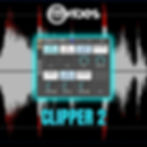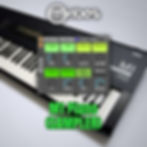What makes a song a Tech House?
- Rafael Manga
- May 17, 2021
- 6 min read
What is the genre “Tech House”?
Here you will know When and How Tech House became a genre.
The best of techno and house music together to make a new sub-genre. Invented in the 90s and really beginning to surge in the 2000s, this sub-genre takes the groove and melody from house music to combine it with the steely percussion and gritty basslines usually associated with techno. Coming to fruition through the likes of Joris Voorn and Carl Cox, tech house is now one of the most popular styles of electronic music around. The modern resurgence has been clear, with the likes of FISHER, Chris Lake, Solardo, and Michael Bibi becoming household names. Record labels such as Black Book Records, Toolroom , Defected, Solid Grooves, Repopulate Mars have had some of the biggest releases that have pushed this style further into the spotlight in recent times.
There is a clear and distinct difference in the sound of tech house when compared to your typical house music and typical techno style. Take techno for example; the tempo is generally faster, with far bigger, booming kick sounds, while the percussion is more minimal with the focus being predominantly on the low end. Then take house music. This takes usually a more melodic approach with instruments like a piano being a common feature. There is often a vocalist on house records too, and it definitely can have an 80s influence in how it sounds. Compare this to the tech house style and you will definitely hear the differences. The groove element of a tech house track is without a doubt a stand out feature. The percussion in a tech house track is more of a focus than that of house and techno. This is a very general statement as it is not always the case, but we will now discuss exactly what 5 key elements make a tech house track.
Big Bassline Hook
The bassline in any tech house track is one of the most prominent elements. When in a nightclub, that big bassline keeps the dancefloor moving. So you want that hook to be catchy and grooving from start to finish. Keeping the range of notes in bassline close, making a moviment is key. You don’t want your bassline to be really spaced apart in terms of notes on the piano roll. Keeping it from root note up to as high as the 5th of the key in that one octave is usually going to keep it sounding deep. A good tip here would be to study the basslines of tracks that you like; try and see if you can play them, and see how little they actually move around the keyboard.
You also have to think about the sound. The sample. The plug-in. There’s no strict way to do this. But using something like the native Ableton’s Operator instrument or the VST Serum (one of the best in my opinion) and playing about with that can create some really good tech house basslines. Sine wave bass shapes are effective, Deep and Clean sounds, and often a sine wave and triangle wave layer work well together. For strong and present Bass, i recommend the Saw wave with a Low Pass filter between 200-300hz and maybe a Square wave layer for make a wider Bass. Don't forget to be sure that your sub bass is in Mono.
Don't forget to check our Serum Preset Pack Tech House For Serum with 37 bass/sub bass modern presets.
If you can get that low end of your bass to fit nicely with the kick drum, using side-chaining if necessary, then your bass will sound good. Using processing such as saturation is going to warm up the bass. Getting that warm and full bass sound is a definite must in a tech house track. Keeping your bass in mono will also make a difference (at least under the 150hz), which is important as subwoofers and sound systems in clubs generally produce sound in mono. Also, there could be potential phase problems if the bass isn’t in mono, so this will help to eliminate those. The bassline has a lot of energy and would take up a lot of space in the mix otherwise.
Kick Drum
You’re in the line waiting to enter. Everyone knows the sound. The anticipation of entering the club and hearing that muffled kick drum outside. The importance of having that powerful, punchy kick drum cannot be understated. Not just so you can hear the kick outside the club, but so that it punches you in your chest inside the club too.

Tech house kicks are naturally powerful. Soft kicks are usually not always the best choice on their own. Choose a good sample is the key, and i recommend our sample Pack Tech House Drums, that come with high quality drums samples and 25 different Kicks.
If you have a good sample, processing isn't so necessary, but if you find a good sample and it doesn't have the perfect low-end, punch, or attack you may process it and keep your kick in mono, just like your bass, it is vital.
Percussion (Clap, Open Hat / Ride)
A crisp, loud clap and the open hi-hat are two key percussion elements in tech house. Let’s focus on the clap first. The volume of the claps should be balanced against your kick drum. The clap shouldn’t overpower the other elements, but it has to be prominent. You want both to really punch through in your track. Again, the samples here are very important. These can be layered together with other clap samples to good effect. Ensuring your claps have a nice reverb and are placed in the correct place in the stereo image in your track is essential.
Next, we’ll talk about an open hi-hat sound. There’s no tech house track complete without it. The iconic off-beat open hi-hat sound is an essential feature. Getting that real open hi-hat sound really helps here. Sometimes getting actual authentic hi-hat sounds can really transform the track. These can be readily found in sample packs like ours. Play about with the release on the sample to change the length of it. A little reverb on it will make it wider, then ensure it’s in the correct place within the mix. Even using a little bit of saturation will brighten up your hats and make them sound crisper in the mix. It will sometimes even sound like a ride cymbal and open hi-hat layer that is going on in the track. A ride loop will speed up and/or bring more energy to your Tech House song.
The Groove
So much music nowadays is produced on laptops and computers. It can sound fairly robotic unless you use swing. The swing and shuffle rhythms are used throughout tech house tunes. This gives the track a more realistic and human feel to it as if it were the artist actually playing the drums. This swing is useful when using MIDI to write in your elements. Setting the swing to 16-15 or 16-45 usually feels about right for the tech house style, but there are other ways to do it, like delay or anticipate a few milliseconds all the instrument channel.
The other instrument where this can be done effectively is with your kick drum. Yes, you need it to be pounding that four to the floor feel throughout the track but have you ever tried creating a swing feel with your kick drum? This could be used as a drum fill and is a really effective way to change up things in your track.

Even using a drum tom to create a rolling groove under your kick drum is another idea. It creates a similar effect just to keep the feel of the swing and groove there throughout the tune. Anything to keep that groove and take away the robotic programming feel will fit into the track.
Drum Fills
This is another important feature to take your tracks away from that robotic and repetitive feel. Once the bassline hook and melody has been established in the track, it’s key to just keep the track alive by using drum fills.

Other ways this can be done could simply be like changing the rhythm of the clap, using delay on the drums or even using crash cymbals at the end of an 8 bar phrase.
Listening to other tech house tracks will certainly give you inspiration for the kind of fills typical to the genre.
So, remembering, if you need a high quality Drums Samples to make a Tech House song, check our Sample Pack Tech House Drums by RM Vibes.
If you need a Modern Presets for Serum, we have the Tech House for Serum.
If you produce on Ableton Live and need a inspiration or a reference track to start, we have tons of Tech House Templates and Remakes, just check our Home Page to guide you to find what you need.























